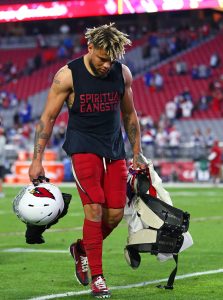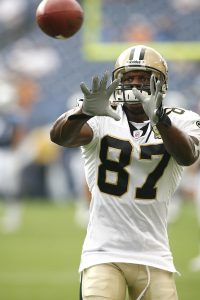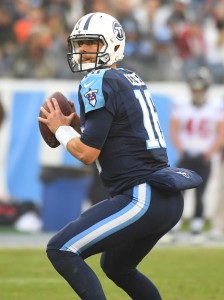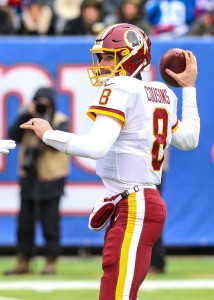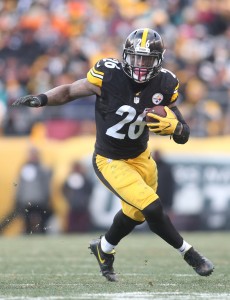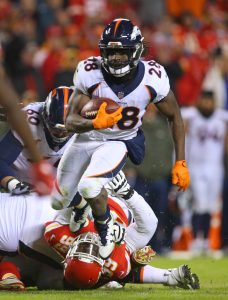Over the past couple weeks, we’ve asked you which teams from the AFC North, AFC East, AFC West, NFC West, and NFC North had the best offseasons. Today we’ll be looking at the offseason each team from the NFC East had, another division with a lot of moving parts.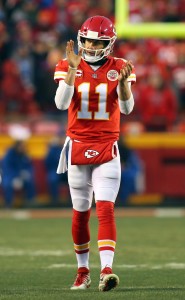
The Redskins may have had the most tumultuous past couple months of any team in the division. Their years long drama with Kirk Cousins finally culminated in the team trading for Alex Smith and allowing Cousins to walk in free agency. Coach Jay Gruden has been adamant that there will be no downgrade from Cousins to Smith, and that the team is very high on Smith. Washington’s receiving corp will look quite different, with Terrelle Pryor and Ryan Grant gone, and Paul Richardson brought in from Seattle in their place. They added defensive tackle Da’Ron Payne with the 13th overall pick to help shore up their run defense and selected running back Derrius Guice in the second round. Guice was viewed by most as a first round talent who fell into the Redskins’ laps due to off-field concerns. They also signed cornerback Orlando Scandrick and linebacker Pernell McPhee in free agency, and will return several key players from injury, like defensive lineman Jonathan Allen. It was an offseason of change for the Redskins, and the team will have to hope Smith can carry over his play from last season when he was the best of his career.
The Giants’ 2017 season went off the rails fast. After a playoff appearance in 2016, the team started the year 0-4, which quickly led to infighting. Both head coach Ben McAdoo and GM Jerry Reese, replacing them with Pat Shurmur and Dave Gettleman respectively. The team ultimately passed on taking a successor to Eli Manning with the number two overall pick, instead taking running back Saquon Barkley and signing the veteran Jonathan Stewart to be his backup. The team made Nate Solder the highest paid tackle in football, signing him away from the Patriots to help bolster their offensive line, and area of weakness the past few seasons. They also drafted guard Will Hernandez 34th overall to help along the interior. While the team has announced they plan on riding Manning for the foreseeable future, they did take the intriguing small-school quarterback Kyle Lauletta in the draft. They traded Jason Pierre-Paul to the Buccaneers in March, leaving a hole at pass-rusher. Overall, the Giants 2018 season will depend on how much Manning can bounce back from his poor 2017. If Manning and Odell Beckham Jr. can both return to form, the Giants could sneak back into the playoffs.
The Cowboys didn’t add many major pieces this offseason. The biggest storyline surrounding the team was the release of Dez Bryant. The Cowboys were apparently fed up with Bryant’s antics and his on-field production no longer justified keeping him around. They signed Allen Hurns from the Jaguars to replace him and step in as their new number one receiver. Dak Prescott‘s receiving options will look a lot different next year as they also lost Jason Witten to retirement and Brice Butler in free agency. They drafted linebacker Leighton Vander Esch in the first round to strengthen the defense. Other than their pass-catchers, the 2018 Cowboys will look fairly similar to last year’s underachieving squad. They’ll have Ezekiel Elliott for the full season after he was suspended for part of last year, and will look to recapture the magic of their 13-3 2016 season.
The Eagles went into the offseason riding high off their Super Bowl victory. They lost several players, but moved quickly to replace them all. When defensive linemen Vinny Curry and Beau Allen left in free agency, they promptly traded for Michael Bennett and signed Haloti Ngata. They lost offensive coordinator Frank Reich who took the Colts’ head coaching job and quarterbacks coach John DeFilippo who left to become the Vikings’ offensive coordinator. LeGarrette Blount left to sign with the Lions, but the Eagles have a deep running back depth chart still. The team rewarded Super Bowl hero Nick Foles with some extra incentives in his contract, although he still could possibly be dealt at a future point. They re-signed linebacker Nigel Bradham and added Corey Nelson and Paul Worrilow in free agency to further strengthen the linebacking corp. The biggest storyline for the defending champions this summer will continue to be the progress of Carson Wentz as he rehabs from a torn ACL. If Wentz is healthy, with all the pieces added to the defense this spring, the Eagles should be able to compete for another Super Bowl in 2018.
